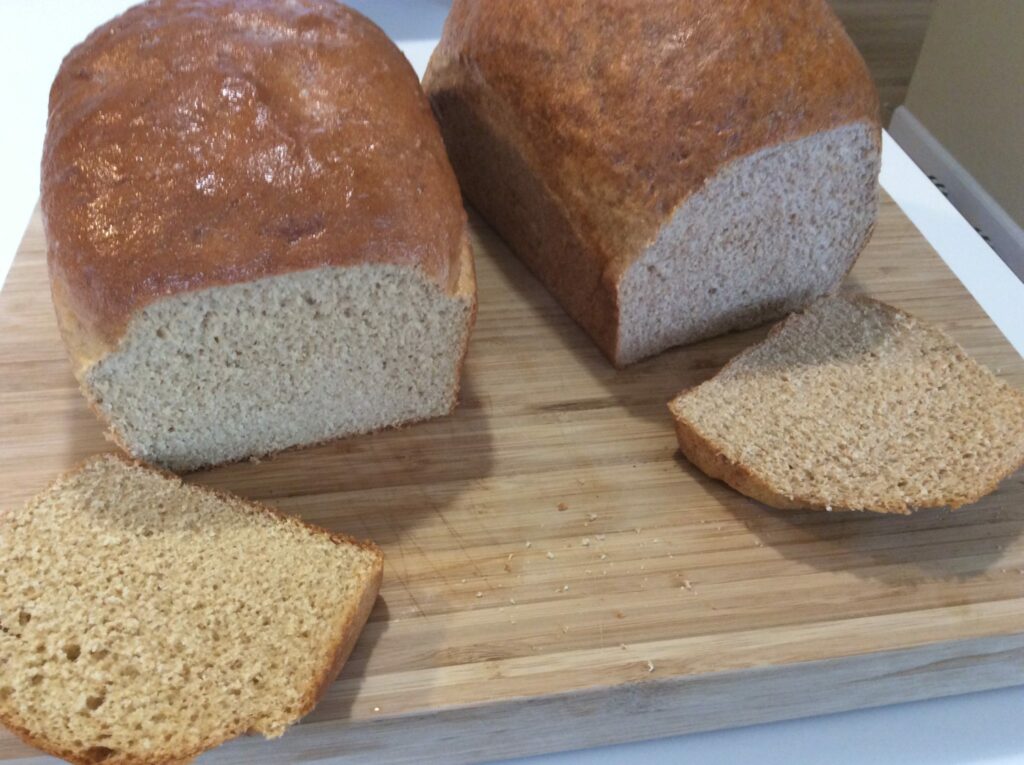
What’s the difference between White Whole Wheat flour and regular Whole Wheat? Find out in this head-to-head comparison.
Like most of the rest of the country, we’ve been getting some cooler weather here in Denver. When that happens, I like to fire up the kitchen and start baking. I noticed I was running low on bread, so I decided to check out this Easy Whole Wheat Bread Recipe. And for kicks, I decided to make it a bake-off: White Whole Wheat versus Whole Wheat. See how my regular Hungarian Stone Ground Whole Wheat stacks up against King Arthur White Whole Wheat flour.
Read the Best Cooking Magazine Ever – Cook’s Illustrated
I find bread making to be meditative. There are bursts of activity, then hours of doing other things, then more activity, then more quiet. I don’t mind tackling a complicated recipe now and then – with butter just the right consistency, or eggs that are mixed in one at a time, or honey or molasses or agave syrup! It’s fun to find out what the concoction actually tastes like when you’re done.
As I mentioned above, I’m testing my regular whole wheat flour against this new King Arthur White Whole Wheat Flour. The regular whole wheat is made with red winter wheat; the King Arthur is made from the whole grain of a white wheat.
The color is not markedly different, as you can see. So if you’re trying to fool the kids with something that’s going to come out looking like store-bought white bread – it’s not going to work! But there are big differences in using the product.
I found the regular whole wheat flour needed twice as much additional water as the white whole wheat – and even that might not have been enough. The white whole wheat bran is more delicate and light than the red whole wheat, so it doesn’t need to absorb quite so much moisture.
Kneading the regular whole wheat dough was far more laborious than the white whole wheat. I almost couldn’t tell a difference between working with it and with regular unbleached flour. Huge benefit for those with achy hands!
Texture-wise, you can see that the regular whole wheat on the left is a bit more “rugged” than the white whole wheat on the right. Personally, I like a bread with some heft, but the white whole wheat will give you a lighter, airy loaf:
You can see that the white whole wheat on top is rising much higher than the regular whole wheat on the bottom. The finished loaves reflect this, too:
The loaf on the right is the white whole wheat – it’s hard to tell from the picture, but it’s at least an inch taller than the regular whole wheat.
The loaf is definitely “lighter” in color, but no one will be fooled into thinking is regular white bread!
Ahh, but the real test is the taste and again, you’ll see a marked difference. The King Arthur White Whole Wheat bread has a much lighter, less bran-y flavor than the regular whole wheat – by FAR. With the loaves rising higher, you get a much lighter, airier slice of bread. It holds together superbly – great for a sandwich.
Nutrition-wise, the white whole wheat contains 4 grams of dietary fiber per 1/4 cup, there the regular whole wheat contains 3 grams! That surprised me.
I highly recommend both flours – I’ve used them both and they work very well for me. But if you don’t normally care for whole wheat, give the white whole wheat a try. It may surprise you!
Easy Whole Wheat Bread Recipe
Ingredients
- 2 packages Active Dry Yeast
- 3 tbsp Sugar
- 2 1/2 cups Warm Water <110F, plus a few tbsp more
- 3 tbsp Lard or Oil Softened
- 1 tbsp Salt
- 6 1/2 cups Flour Whole Wheat or White Whole Wheat
Instructions
- I use a Kitchenaid stand mixer, so in the mixing bowl, dissolve the yeast and sugar in the warm water. Stir in the lard, salt and two cups of flour + additional teaspoons of water – depending on the type of flour you’re using. Beat well until mixed. Then add the remaining flour, one cup at a time with the extra water.

- Once the dough gets too thick for the mixing paddle, switch to the dough hook (for me it’s about that last 2 cups). Knead the dough with the dough hook for about 5 minutes – or by hand on a floured surface for 8 minutes. If the dough looks like the surface is tearing and unelastic, add more water. If it feels sticky to the touch, even after kneading, add a pinch more flour. The finished product should be smooth and elastic.
- Grease another large bowl and place the kneaded bread inside, rolling it around to coat it with oil. Place a damp towel or plastic wrap over the bowl and set it in a warm-ish place to rise for about an hour, or until it has doubled in size.
- Punch the dough down and place it on a lightly floured surface. (I have a bread board I inherited from Dwaine’s mother – just a nice, large board I store in a little niche between the fridge and the wall.) Divide the dough into to pieces and form into elongated loaves. Click here how to shape a loaf.
- Place the loaves into greased 9X5″ loaf pans. Cover the loaves with a damp cloth and let them rise again until double in volume – about 40 minutes.

- Preheat the oven to 425 F. Just as you place the loaves in the oven, lower the temp to 375 F. Bake for 30 minutes or until the top is golden brown and the loaf sounds hollow when tapped.

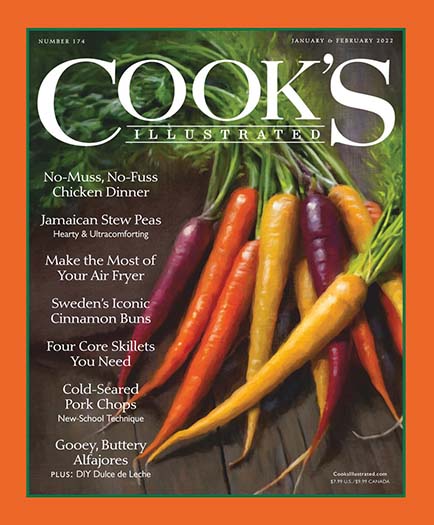

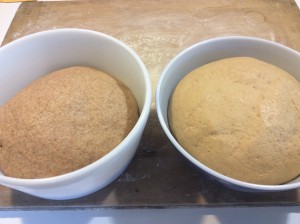
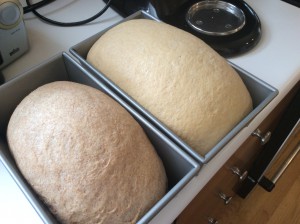
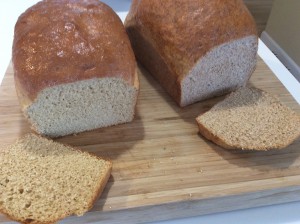
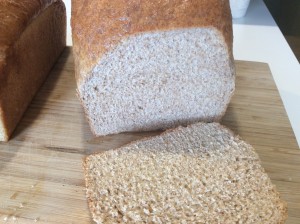
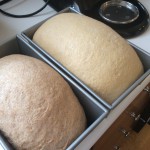
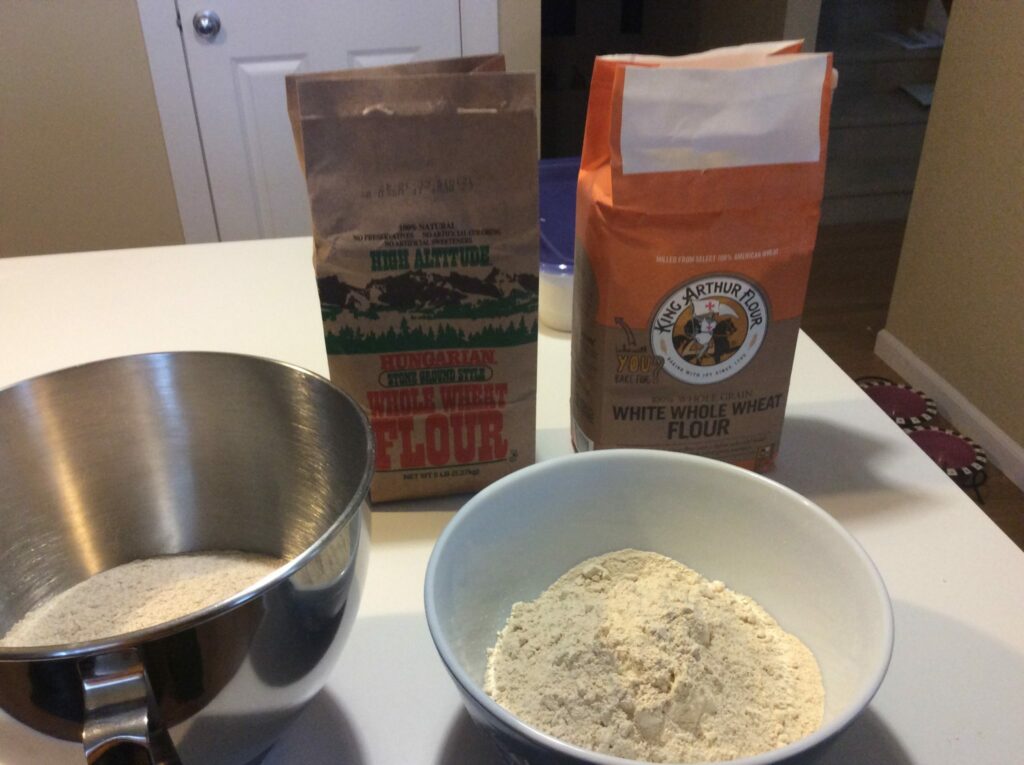
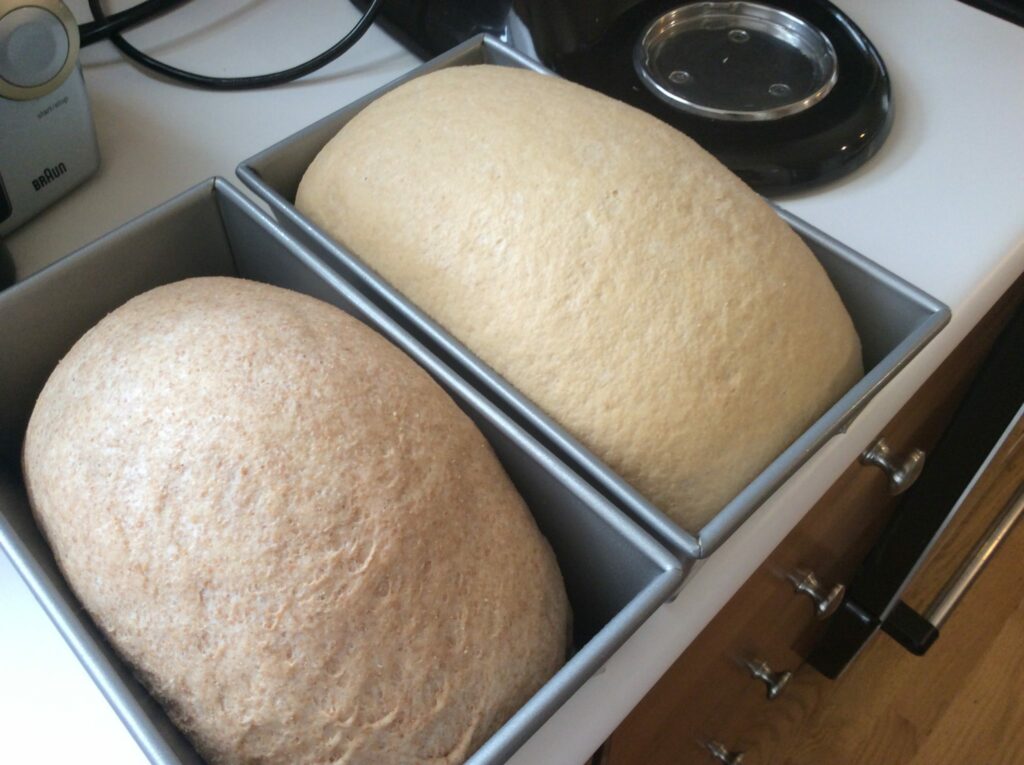
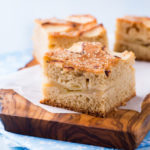
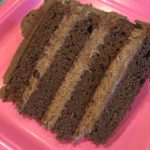
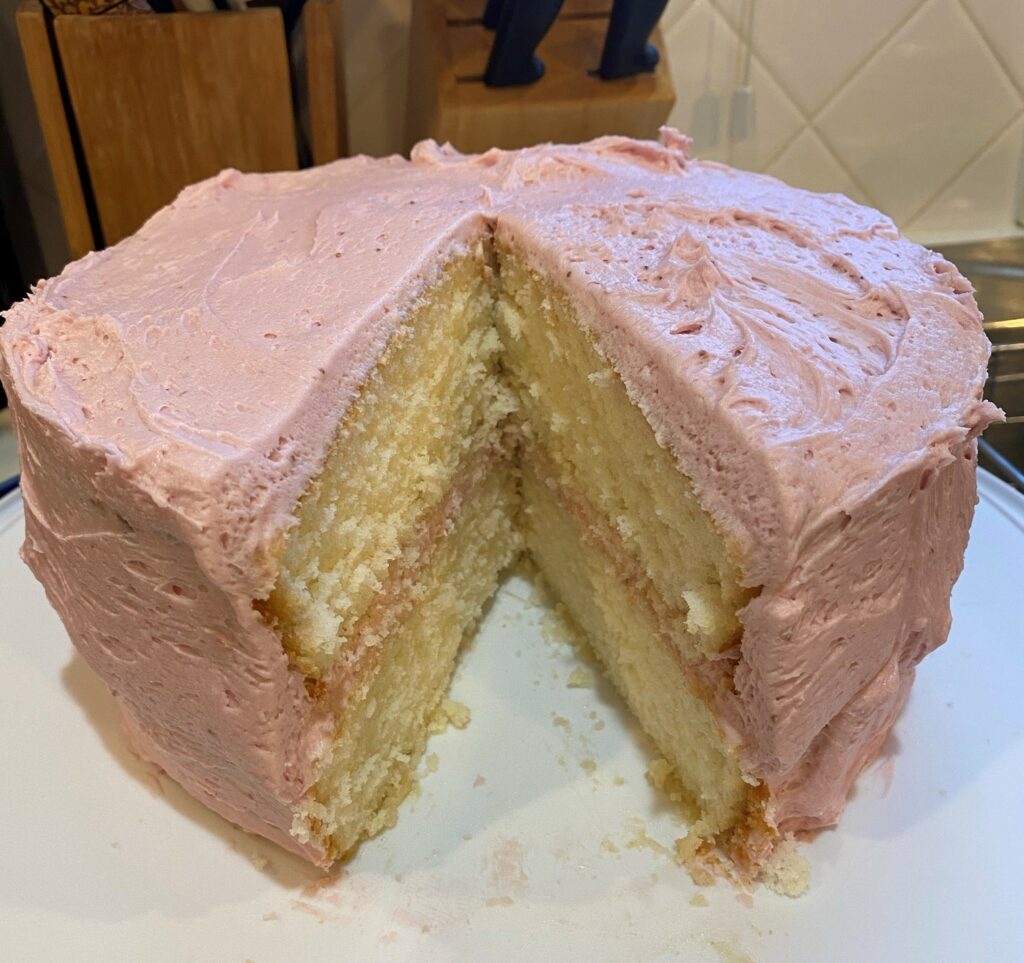
Here are some differences, actullay whole wheat bread is nutritionally better than white and regular wheat.-100% whole wheat/whole grain breads have more fiber than white bread-White bread uses bleached flour and wheat does not.-The flour for both is made from wheat berries, which have three nutrient-rich parts: the bran (the outer layers), the germ (the innermost area) and the endosperm (the starchy part in between). Whole wheat is processed to include all three nutritious parts, but white flour uses only the endosperm. When put head-to-head with whole wheat bread, white is a nutritional lightweight. Whole wheat is much higher in fiber, vitamins B6 and E, magnesium, zinc, folic acid and chromium.-Simply switching from white to whole wheat bread can lower heart disease risk by 20 percent, according to research from the University of Washington reported in the April 2, 2003issue of The Journal of the American Medical Association. Read here for more: